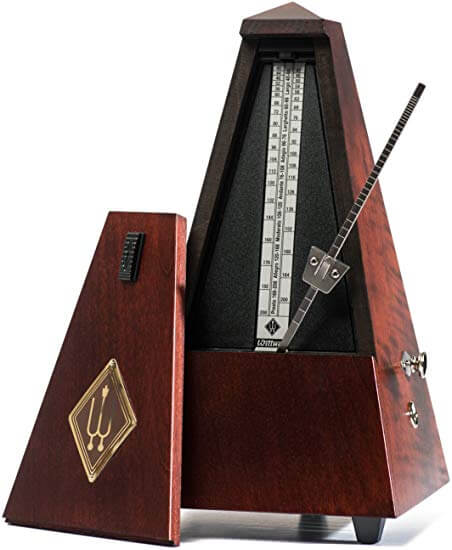Looking for a way to improve your piano practice? Here's this week's pro tip for you: use the metronome more often!
Sometimes the metronome seems so annoying to practice with. Why listen to endless beeping when we're trying to play beautiful music? Metronomes actually have a few benefits to them, and that is why we use them in practice.
Pulse
The first benefit of this pro tip is developing a sense of pulse. Pulse helps us settle into a grove, which helps our audience feel comfortable. People enjoy toe-tapping passages, only possible with a strong beat to tap into. Even in passages with rubato, the metronome can help--the best rubato gives as much speed as it takes, still evening out to the same pulse despite fluctuation.
Security
The second benefit to using the metronome is realizing where we are less secure. Students often think they play better without the metronome. Pieces can sound initially better without the metronome because the student doesn't have something else to focus on and can take an extra millisecond to figure out what notes they're playing. Forcing ourselves to play with the metronome anyway brings out our weaker spots. We then know where to spend the most of our practice time.
This is especially useful when trying to play pieces memorized--turning the metronome on as we run through a piece to check how memorized it is points to where we don't have as quick of a recall. It also helps us realize where we need to spend more time creating a quicker contrast. Sometimes it takes a moment to switch from forte to piano, and the metronome can help us speed that up as we gradually increase the tempo.
Accuracy
The third benefit of this pro tip is improving accuracy. Sometimes people like to spend the first couple weeks with a piece without the metronome, just learning the notes first. While this is a valid strategy, if done too long without counting, it's easy to spend a long time on the harder parts and rush during easier parts, making the whole piece sound less secure--even if we know the notes. We can actually start learning something with the metronome the very first time we sit down to practice it: we just need to go at a slow enough speed to have the notes and counting be accurate. If the lowest speed on the metronome is too fast for the quarter note, we can play to the metronome clicking the eighth or even sixteenth note.
The metronome is an indispensable tool when we're learning our pieces and playing our exercises. The pulse and precision it helps us create assures our audience we know how to play the piano and lets them enjoy our music.
P.S.
Pro tip number 2: if you search "metronome" in Google Chrome, you get a digital metronome that you can use from your browser!

